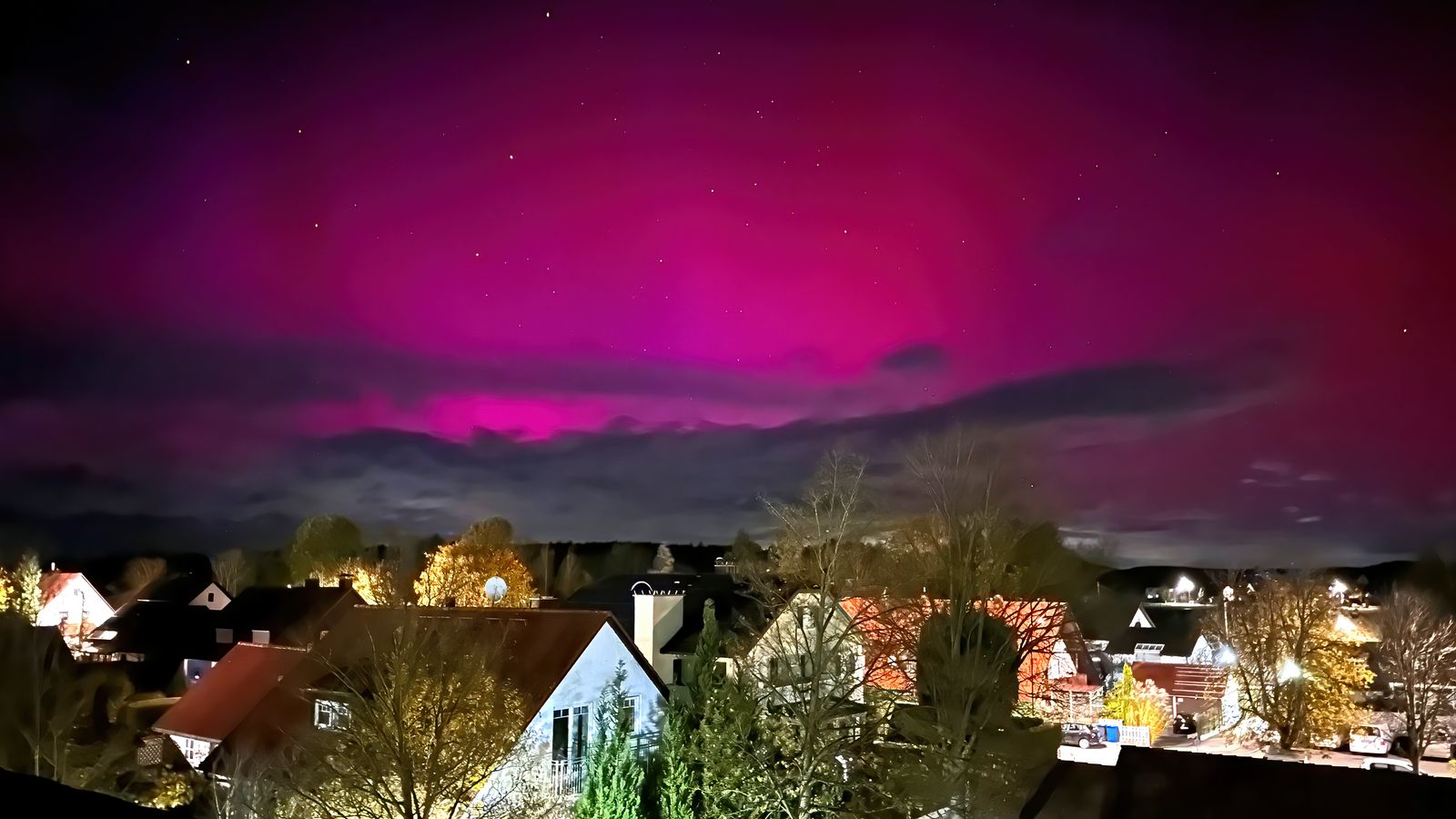When plasma is thrown toward Earth during a solar storm, northern lights can be created. Colored light phenomena then dance across the sky, especially in the polar regions. But it is also possible to detect unusually strong northern light on Sunday evening in some areas in Bavaria, such as Indersdorf Markt in Upper Bavaria.
Unfortunately, overcast skies prevented this impressive spectacle from being observed in many places in the Free State. After a whirlwind weekend, things should get friendlier again at the start of the week.
The sun is particularly active at the moment
The northern lights are a standard occurrence in Finland, Norway, Iceland and also Canada, but since the beginning of the year they have also been seen more frequently in our latitudes. This can be explained by the increased activity of our Sun.
“In principle, this is not unusual and occurs in regular cycles approximately every eleven years,” Markus Rapp, director of the German Aviation Center at BR24, explained in May this year. It describes the solar cycle, that is, the cycle of the Sun’s magnetic activity. This is actually trending towards the new maximum again at the moment. This means that there are regular explosions of high-energy particles in the solar atmosphere.
The Earth’s magnetic field directs electrically charged parts to the poles
“Without the constant stream of electrically charged particles emanating from the Sun, also called the ‘solar wind,’ there would be no northern lights,” says Michael Sachweit, a weather expert at BR. The solar wind consists mainly of protons (hydrogen ions) and electrons emitted by the Sun. They race through space at speeds ranging from 300 to over 1,000 kilometers per second and also collide with the Earth in the process.
But our planet is protected by its magnetic field. Without it, the Earth would be subject to an uncomfortable bombardment of high-energy particles. But the Earth’s magnetic field deflects the radiation of electrically charged particles from space toward the poles.
Oxygen emits green and red light, and nitrogen emits violet light
The Earth’s magnetic field is weakest at the poles. There, solar wind causes air molecules at an altitude of 65 to 800 kilometers to glow: oxygen emits green and red light, while nitrogen emits violet light – the stunning northern lights. “The maximum intensity of green light is around 120 to 140 km, while red aurora usually shines towards the Earth from altitudes of more than 200 km,” explains BR Sachweh weather expert.
Most of them actually only occur near the Earth’s poles, as their name suggests. But in times of high solar activity, you can even see the northern lights here. However, heavenly fireworks can be seen on Sunday in Austria.
In the video: Solar flares – dangerous space weather

“Total coffee aficionado. Travel buff. Music ninja. Bacon nerd. Beeraholic.”








More Stories
Coral Seeding: Artificial Insemination Makes Coral More Heat Tolerant
Fear, Anger, and Denial: How People Respond to Climate Change – Research
LKH Graz: Using radiation to combat heart arrhythmias